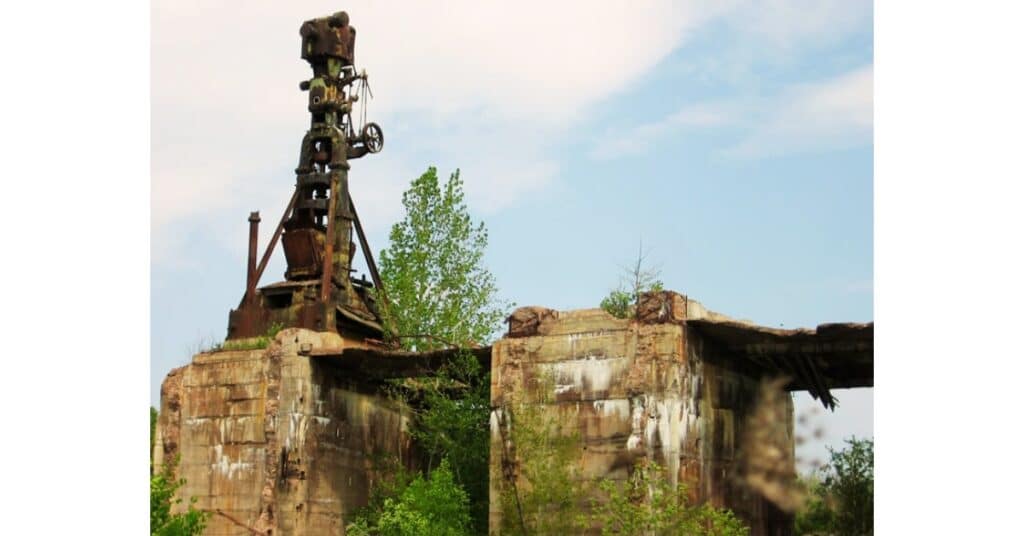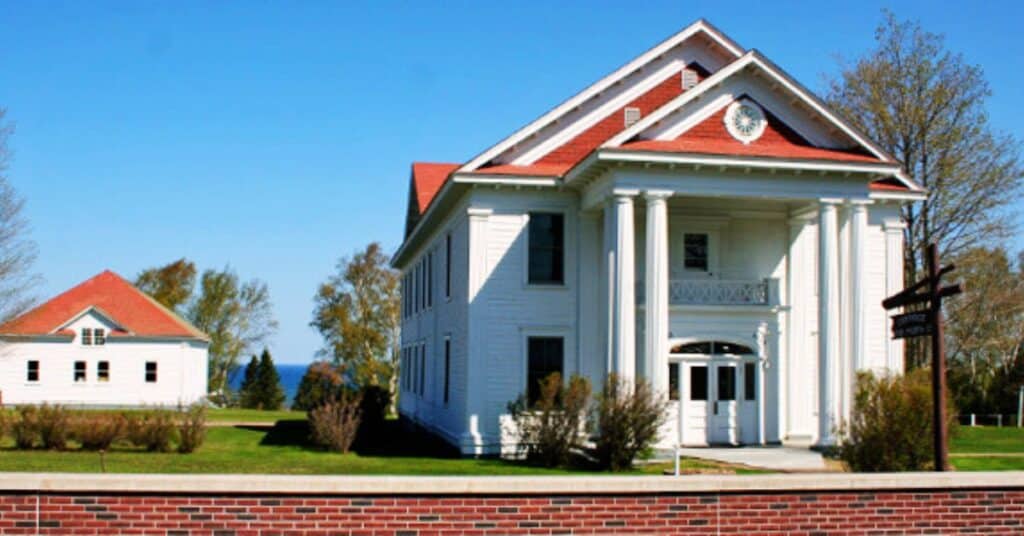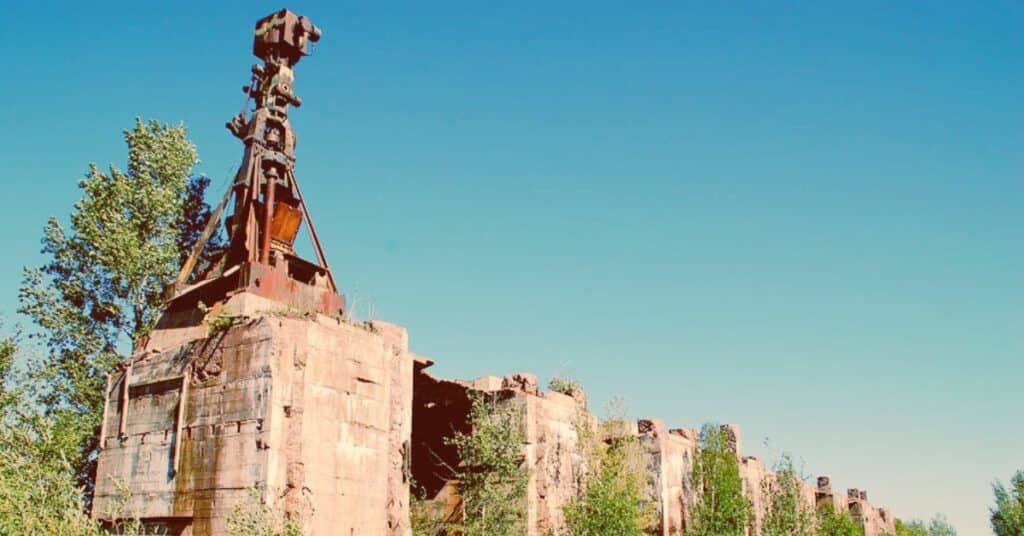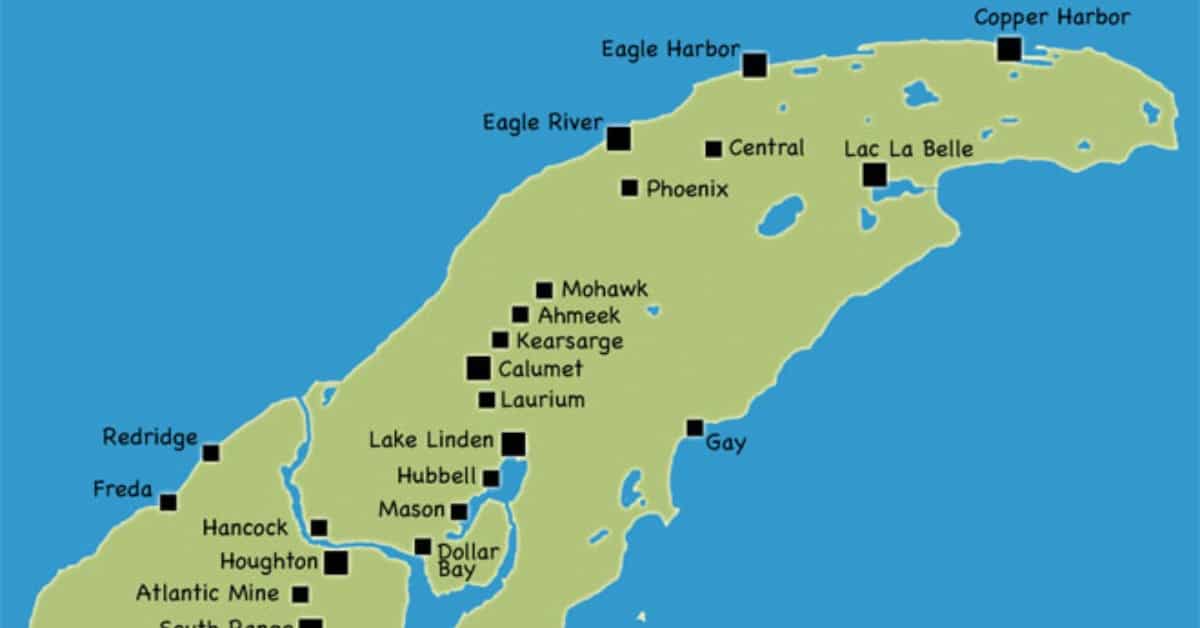Welcome, dear reader, to an extraordinary educational journey through the captivating Keweenaw Peninsula. Get ready to embark on an adventure that will awaken your senses, ignite your curiosity, and leave you yearning for more. As your passionate teacher, I am thrilled to guide you through the remarkable wonders of this hidden gem of Keweenaw Peninsula, Michigan.
The Keweenaw Peninsula is technically not a peninsula at all, but instead is a large island set off from the mainland by a connected series of lakes, rivers, and man-made canals known collectively as the Keweenaw Waterway.
For generations, the native inhabitants of the Superior region used this water route to eliminate the need for a long and dangerous trip around the peninsula’s tip. This waterway was referred to as “Keewaiwona”, which roughly translated into “the crossing place”. When European explorers arrived in the region in the early 1800s, the Keewaiwona became the Keweenaw.
The peninsula’s claim to fame is its reserves of pure native copper that lie just below the rocky ridges of its interior. Thousands of years ago, this copper was fashioned into tools and jewelry by native peoples – the earliest metalworking known in North America. It would be the ancient pits from these early mines that would help pinpoint the peninsula’s copper lodes for the rush of copper prospectors that would arrive many generations later.
Also Read
The modern copper rush to the region began at Copper Harbor in the mid-1800s, resulting in hundreds of fledgling mining companies spreading out across the vast wilderness in search of riches. But the copper deposits were finicky, and most of these early mines failed within a few years.
As the copper prospectors moved southward, they would encounter their first successes along the Greenstone Flow, which manifested itself as a line of towering cliffs along the peninsula’s spine. The Cliff and Central Mines spurred renewed optimism in the region and its true potential.
Soon the great copper lodes to the south would be discovered, and the region’s giants would begin to emerge – C&H, Quincy, and Copper Range. These three companies would grow exponentially in the early part of the twentieth century, their success spawning a frontier metropolis sprawling from Painesdale to Mohawk.
Ahmeek

Named after the Ojibway word for “beaver”, this once-thriving commercial district grew in response to the neighboring Ahmeek Mine.
Atlantic Mine
This mining town grew up around the southern range’s first mine – the Atlantic – and would later become home to over 1800 residents.
Calumet
Originally known as Red Jacket, the village of Red Jacket was nourished by the great success of the C&H; Mine, allowing it to grow to become the region’s largest city of nearly 30,000 people.
Central
Though today a ghost town, this frontier mining town once boasted over a thousand residents and a hundred homes, all thanks to the great success of its namesake – the Central Mine.
Chassell
One of the few Keweenaw communities not connected to any mine, this lakeside town owes its existence to the booming lumber trade centered around the neighboring Sturgeon River.
Copper City

This small commercial town along the Keweenaw Central Railroad was built by private interests to provide extra housing for workers of the neighboring Kearsarge, Allouez, and Ahmeek mines.
Copper Harbor
It was along the rocky shores of this natural harbor that copper was first discovered in the Keweenaw, prompting the establishment of what would become the peninsula’s earliest settlement.
Dollar Bay
This lakeside town was established by the Tamarack and Osceola Mines to house workers for its sprawling smelting, lumber, and wire mill industries.
Eagle Harbor
This natural harbor became the peninsula’s busiest port early in its history, thanks to the success of the neighboring Central and Copper Falls Mines.
Eagle River
Home to the Keweenaw County seat, this lakeside community burst onto the scene as an unconventional port town serving the neighboring Cliff and Phoenix Mines.
Freda
This remote town at the far end of the Copper Range’s Lakeshore branch was home to the Champion Mine’s sprawling mill and reclamation complex.
Gay
Once a remote fishing village, this lone community on the Keweenaw’s eastern shore grew substantially thanks to the establishment of the massive Mohawk and Wolverine stamp mills nearby.
Hancock
This large city along the steep slopes of the Portage Valley owes its existence to the highly successful Quincy mine and quickly grew to become Keweenaw’s second-largest city.
Houghton
Home to the Houghton County seat, this old port town has managed to survive the Copper Empire’s demise to become the peninsula’s largest and most modern city.
Hubbell
Originally known as South Lake Linden, this old mill town quickly made its own name for itself thanks to its proximity to the neighboring C&H; Smelter and coal docks.
Jacobsville
A different kind of mining gave this remote community at the mouth of the Portage River its start – quarries that produced highly desirable sandstone for regional contractors.
Kearsarge
This suburb of Calumet got its start thanks to the success of the Wolverine Mine and earned itself a stop on the Interurban line in the process.
Lac La Belle
This resort community on the shore of its namesake got its start as a mill and smelter town for the struggling Delaware Mine, a role it never was able to completely fulfill.
Lake Linden
What began as a small French-Canadian lumber town quickly transformed into a booming metropolis thanks to the arrival of C&H;’s massive stamp mills on the shore of Torch Lake.
Laurium
While neighboring Calumet may have been the area’s commercial center, this sprawling community became home to the area’s rich and elite, who quickly populated its streets with beautiful Queen Anne-style homes.
Mason
Marked by rows of identical houses on either side of the highway, this small community was built by the Quincy Mine for workers at its neighboring stamp mills.
Mohawk
Keweenaw County’s largest community, this northern community owes its existence to the neighboring Mohawk Mine and later the sprawling complex of the Ahmeek No.3/4 shaft.
Painesdale
This small mining village was built by the Copper Range Company to serve workers of its successful Champion Mine located just down the hill.
Phoenix
Home to one of the Keweenaw’s earliest mines, this small community along the base of the Cliff Range was a stop on the Keweenaw Central railroad.
Redridge
Now mostly a ghost town, this remote community was once home to two stamp mills as well as one of the largest steel dams in the world.
Ripley
Located just east of Hancock along the Portage Canal, this hillside community was populated by workers from Quincy’s neighboring smelter.
South Range
Free from any mine companies’ paternalistic influence, this commercial village along the Copper Range railroad grew to become the Southern Range’s commercial center.
Tamarack City

This small mill town south of Hubbell owed its existence to the Clark-Bigelow interests, who built a line of mills here for its Tamarack and Osceola Mines.
As we explore the captivating landscapes of the Keweenaw Peninsula, delve into its rich history, and connect with the essence of this remarkable region, you’ll come to realize that our website is the key to unlocking the full potential of your exploration. It is the ultimate solution, providing you with invaluable resources, insider tips, and expert guidance to make your journey truly unforgettable.






